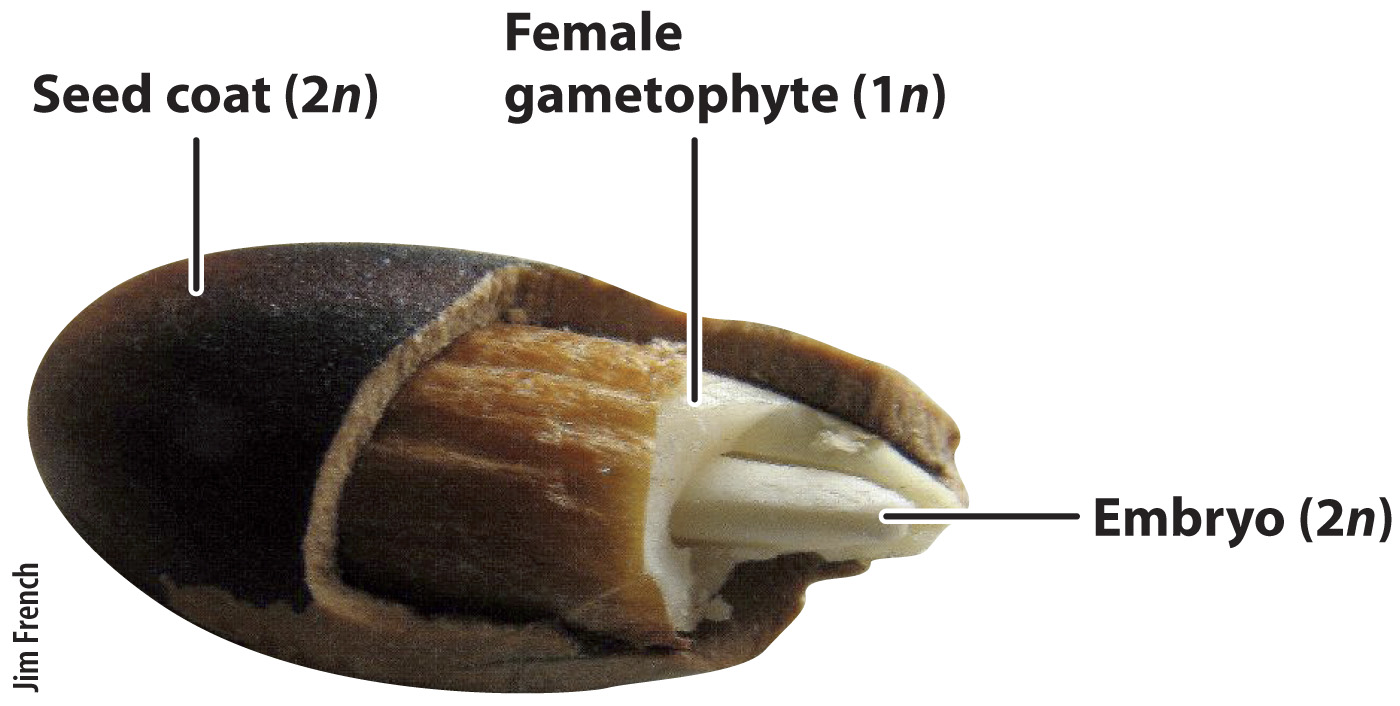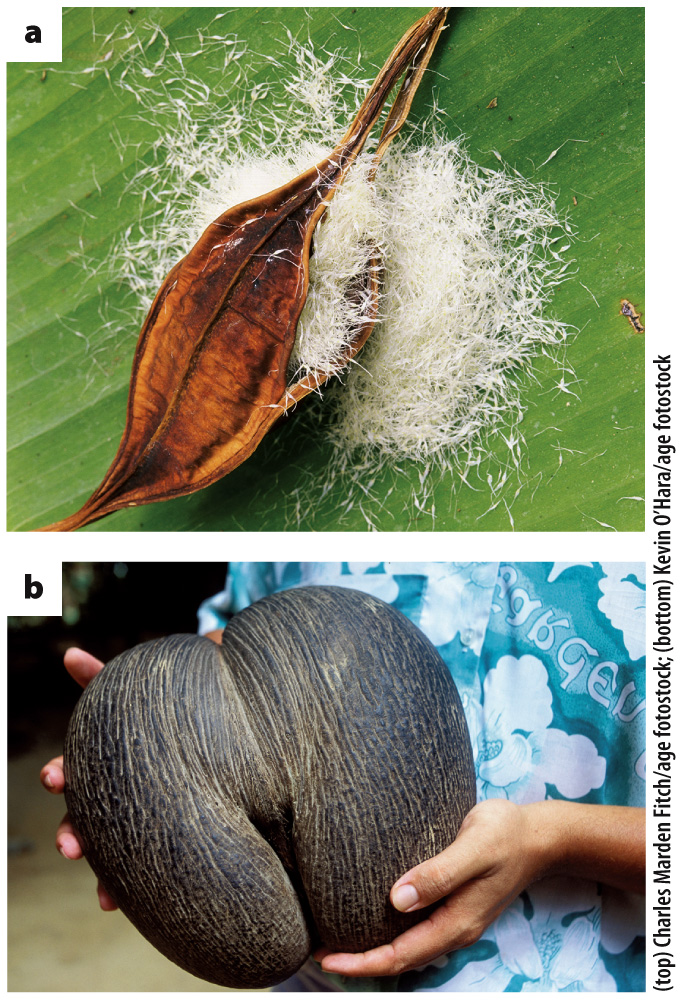Seeds enhance the establishment of the next sporophyte generation.

The union of gametes triggers the ovule to develop into a seed that can carry the new embryo away from the parent plant. Because seeds develop from fertilized ovules, they contain tissues produced by three generations (Fig. 30.9). On the outside is the protective seed coat, which is formed from tissues that surround the sporangium and thus is a product of the diploid sporophyte. At the center is the embryo, which develops from the zygote and represents the next sporophyte generation. In seed plants, the embryo develops an embryonic root at one end and an embryonic shoot with one to several embryonic leaves at the other. In gymnosperms such as pine trees, the embryo is surrounded by the haploid female gametophyte, which provides the raw materials that support the growth of the embryo. In angiosperms, the origin of this storage tissue differs, but it serves the same role of nourishing the embryo.
Compared with a unicellular spore, a seed is able to store more resources to support the growth and establishment of a new sporophyte generation. Many seeds contain high levels of protein and energy-
628

During seed maturation, most seeds lose water. And as water content falls, the seeds’ metabolic activity drops to extremely low levels and the embryo ceases to grow. The combination of low metabolic activity and ample stored resources allows seeds to survive for long periods, in many cases one to several years, and sometimes much longer. Some seeds exhibit dormancy, meaning that they can delay germination even when conditions for growth, notably temperature and moisture, are favorable. Dormancy prevents seeds from germinating at the wrong time, for example on an uncharacteristically warm day at a time of year when the seedlings would be unable to survive. It also prevents seeds from germinating all at once, thus spreading the risk of making the transition from embryo to seedling over a larger time span and range of conditions.
Seeds span over 11 orders of magnitude in size (Fig. 30.10). The 100-
Quick Check 4 Name three advantages of seeds over spores in terms of the probability that the next sporophyte generation will become successfully established.
Quick Check 4 Answer
Compared with spores, seeds can store more resources, slow down their metabolism, and exhibit dormancy, all of which aid their dispersal.